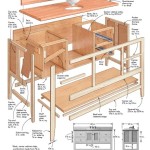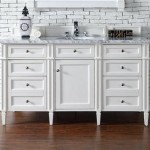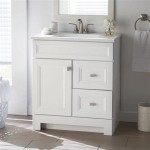How to Hang a Bathroom Vanity Mirror with Lights
Installing a bathroom vanity mirror with lights can dramatically enhance the aesthetic appeal and functionality of a bathroom. However, it requires careful planning and execution to ensure a safe and secure installation. This article provides a detailed guide on how to hang a bathroom vanity mirror with lights, covering essential preparation, electrical considerations, and step-by-step installation procedures.
Before commencing the installation, it is crucial to verify local building codes and electrical regulations. These codes often dictate specific requirements for electrical fixtures in bathrooms, including wiring methods, grounding, and proximity to water sources. Failure to comply with these codes can result in hazardous conditions and potential legal ramifications. If unsure about any aspect of the electrical work, it is highly recommended to consult a qualified electrician.
Planning and Preparation: Ensuring a Successful Installation
The initial phase involves meticulous planning and preparation to ensure a smooth and efficient installation process. This includes selecting the appropriate mirror and lighting fixture, gathering necessary tools and materials, and preparing the installation area.
Selecting the Mirror and Lighting Fixture: The choice of mirror and lighting fixture should be based on the bathroom's overall design, the size of the vanity, and personal preferences. Consider the dimensions of the mirror and ensure it is appropriately sized for the vanity. Select a lighting fixture that provides adequate illumination for the intended purpose, such as applying makeup or shaving. LED lighting is a popular choice due to its energy efficiency and long lifespan. Verify that the selected fixture is suitable for bathroom use, typically indicated by a UL (Underwriters Laboratories) listing for damp or wet locations.
Gathering Tools and Materials: A comprehensive set of tools and materials is essential for a successful installation. The required items typically include:
*Stud finder: To locate wall studs for secure mounting.
*Level: To ensure the mirror is hung horizontally.
*Measuring tape: To measure and mark locations accurately.
*Pencil: To mark reference points on the wall.
*Drill with various drill bits: For drilling pilot holes and mounting screws.
*Screwdriver set (Phillips and flathead): To tighten screws.
*Wire stripper/cutter: To prepare electrical wires.
*Wire connectors (wire nuts or push-in connectors): To connect electrical wires safely.
*Electrical tape: To insulate wire connections.
*Voltage tester (non-contact voltage tester): To verify that the power is off.
*Safety glasses: To protect eyes from debris.
*Gloves: To protect hands.
*Mounting hardware (screws, anchors): Provided with the mirror and lighting fixture.
*Caulk: To seal the edges of the mirror to prevent moisture intrusion.
Preparing the Installation Area: Before starting the installation, turn off the power to the bathroom circuit at the circuit breaker. This is a critical safety precaution to prevent electrical shock. Use a non-contact voltage tester to verify that the power is indeed off. Clear the area around the vanity to provide ample workspace. Cover the vanity countertop with a drop cloth or protective material to prevent scratches or damage. If an existing mirror or fixture is being replaced, carefully remove it and disconnect the wiring, following appropriate safety procedures.
Electrical Connections: Ensuring Safe and Compliant Wiring
Connecting the electrical wiring is a critical step that requires careful attention to detail and adherence to safety regulations. Incorrect wiring can result in electrical hazards, including shocks and fires.
Identifying the Wiring: Typically, bathroom wiring includes three wires: a black wire (hot), a white wire (neutral), and a green or bare copper wire (ground). The hot wire carries the electrical current, the neutral wire provides a return path for the current, and the ground wire provides a safety path for electrical faults. Verify the wiring configuration using a voltage tester and consult with a qualified electrician if unsure.
Connecting the Wires: Connect the wires from the lighting fixture to the corresponding wires from the wall using wire connectors (wire nuts or push-in connectors). Ensure that the connections are secure and that no bare wire is exposed. Wrap the connections with electrical tape for added insulation. The connections should be made inside the electrical box protruding from the wall. Common steps are as follows:
- Connect black wire to black wire using a wire connector.
- Connect white wire to white wire using a wire connector.
- Connect ground wire to ground wire (typically a grounding screw in the electrical box)
Securing the Wires and Electrical Box: Carefully tuck the wires into the electrical box, ensuring that they are not pinched or stressed. Secure the electrical box to the wall using screws or mounting brackets. Ensure that the electrical box is properly grounded according to local electrical codes.
Testing the Connection: After completing the wiring connections, turn the power back on at the circuit breaker. Test the lighting fixture to ensure that it is functioning correctly. If the fixture does not work, turn off the power and recheck the wiring connections. Again, consult a qualified electrician if problems persist.
Mounting the Mirror: Achieving a Secure and Level Installation
Mounting the mirror securely and level is essential for both safety and aesthetics. This involves locating wall studs, marking the mounting locations, and attaching the mirror to the wall.
Locating Wall Studs: Use a stud finder to locate the wall studs behind the drywall. Wall studs are vertical structural members that provide support for the wall. Mounting the mirror to wall studs provides the most secure attachment. Mark the location of the studs with a pencil.
Marking Mounting Locations: Determine the desired height and position of the mirror on the wall. Use a measuring tape and level to mark the mounting locations for the mirror's mounting hardware. Ensure that the marks are aligned horizontally and vertically. The mounting hardware is typically provided with the mirror.
Drilling Pilot Holes: Drill pilot holes at the marked locations using a drill bit that is slightly smaller than the diameter of the mounting screws. Pilot holes make it easier to drive the screws and prevent the wood from splitting. If a wall stud is not available at the desired mounting location, use wall anchors to provide additional support. Choose wall anchors that are appropriate for the weight of the mirror.
Attaching the Mirror: Carefully lift the mirror and align it with the mounting locations. Insert the mounting screws through the mirror's mounting hardware and into the pilot holes or wall anchors. Tighten the screws securely, but do not overtighten them, as this can damage the mirror or the wall. Ensure that the mirror is level before fully tightening the screws.
Sealing the Edges: After the mirror is mounted, apply a bead of caulk around the edges to seal the mirror to the wall. This prevents moisture from seeping behind the mirror, which can cause damage to the wall and the mirror's backing. Use a caulk that is specifically designed for bathroom use, as it is resistant to mold and mildew. Smooth the caulk with a wet finger or a caulk smoothing tool for a clean and professional finish.
Cleaning and Final Inspection: Clean the mirror and the surrounding area to remove any dust or debris. Inspect the installation to ensure that the mirror is securely mounted, that the wiring is properly connected, and that the edges are sealed. Test the lighting fixture one last time to ensure that it is functioning correctly.
Hanging a bathroom vanity mirror with lights requires careful planning, proper electrical connections, and secure mounting techniques. By following these steps and adhering to safety regulations, a homeowner can successfully install a mirror that enhances the beauty and functionality of the bathroom. If, at any point, uncertainty arises, it is always safest to enlist the assistance of a qualified electrician or contractor.

Guide To Hanging Bathroom Vanity Lighting And Mirrors Liven Design

How To Pick And Hang The Perfect Bathroom Mirror Roomhints

How To Install A Bathroom Vanity Mirror Light

Guide To Hanging Bathroom Vanity Lighting And Mirrors Liven Design

How To Install A Bathroom Vanity Light For Quick Update Hunter Fan

Installation And After Care Guide Led Vanity Mirrors Ledmyplace

How To Pick And Hang The Perfect Bathroom Mirror Roomhints

Best Bathroom Lighting Options For Shaving Putting On Makeup

3 Bathroom Lighting Dilemmas We Don T Talk About Enough

How High Should Bathroom Pendants Be Hung Above Sink Yahoo Search Results Homeimp Modern Lighting Pendant Light Fixtures
Related Posts







